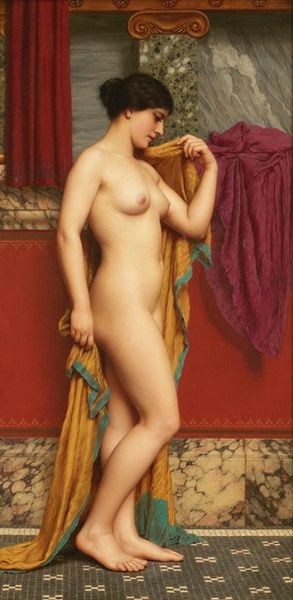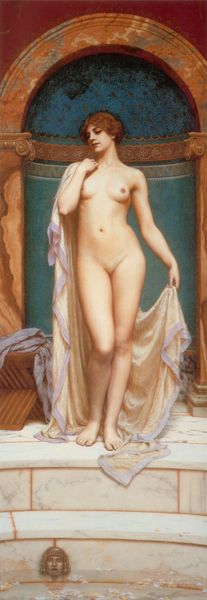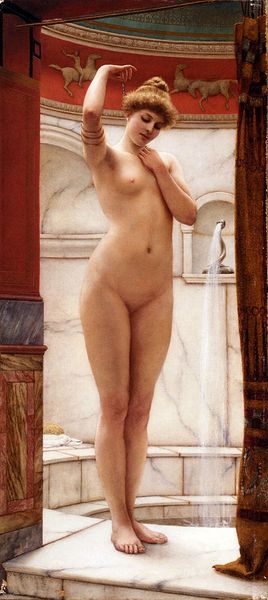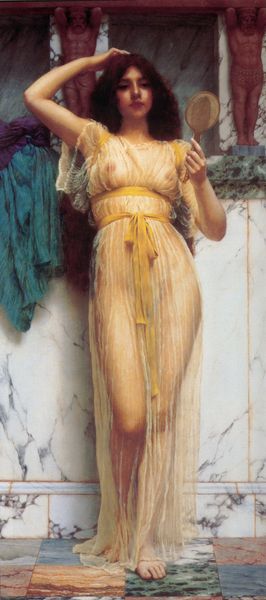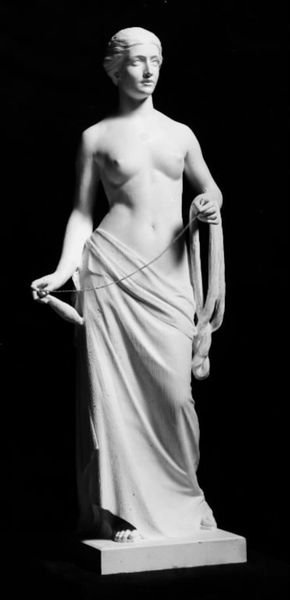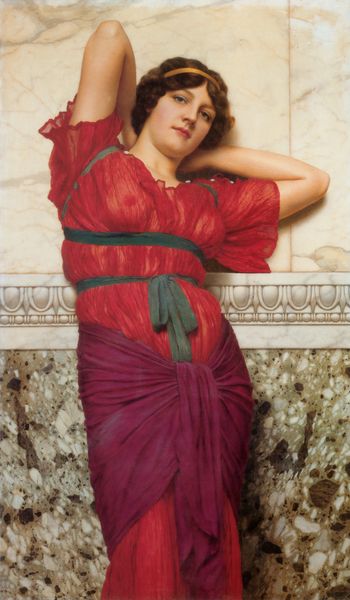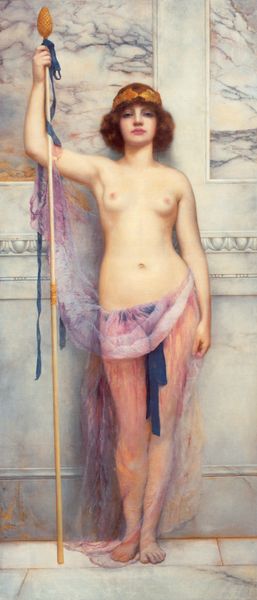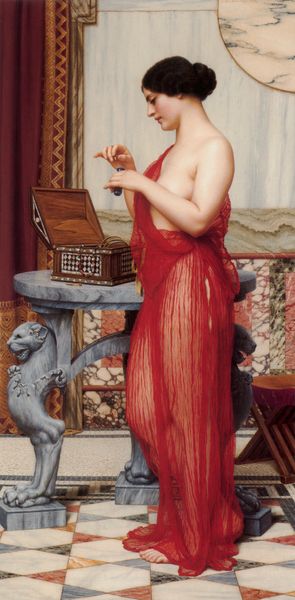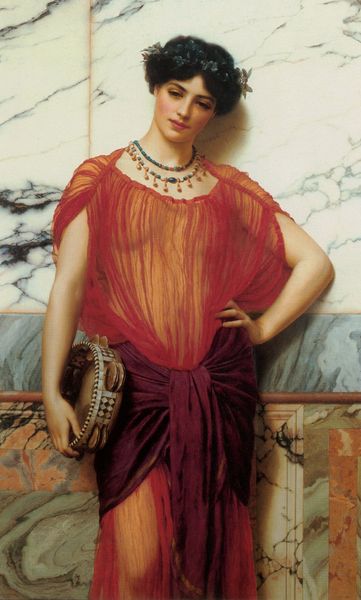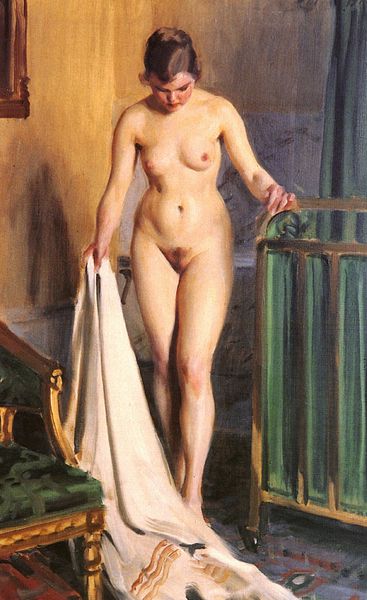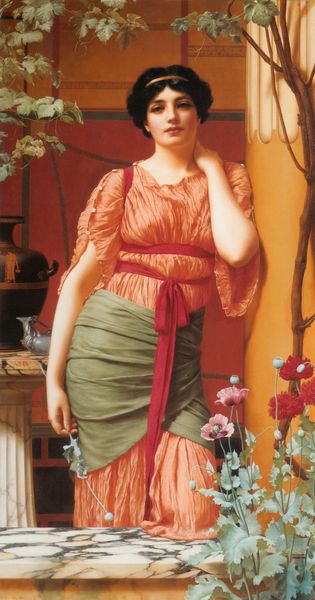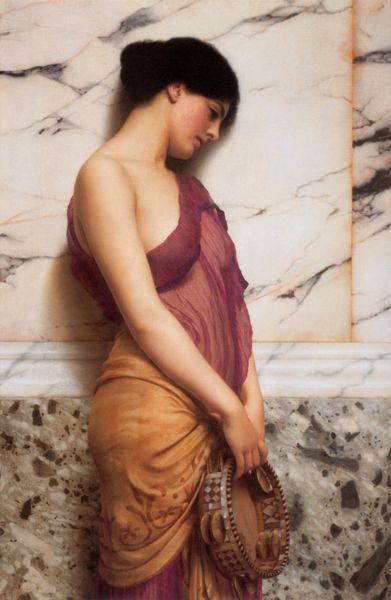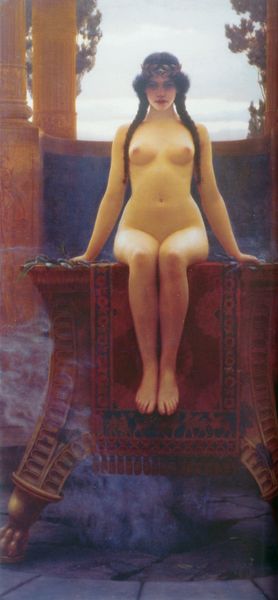
Dimensions: 76.8 x 38.1 cm
Copyright: Public domain
Editor: This is John William Godward’s "At the Thermae," painted in 1909, using oil. There’s such a stillness and serenity in this painting; the woman almost seems lost in her thoughts. How do you interpret this work? Curator: Godward presents us with a vision of idealised beauty, doesn't he? But I wonder, how complicit is this aesthetic with the power structures of the time? The gaze here, the female form on display...it echoes a certain colonial fantasy, a romanticised view of a past devoid of complexity and struggle. Editor: Colonial fantasy? That's interesting. I hadn't considered that. I was mostly struck by the aesthetic elements, but what you are saying makes me consider this art in terms of a narrative which has uncomfortable undertones. Curator: Exactly. Godward, situated within late Victorian England, draws from a well of classical imagery to create a seductive scene. But what about the women depicted? Do they have agency, or are they simply objects for the male gaze? And how does that connect to broader discussions of female representation? Editor: I see your point. It prompts questions about agency, visibility, and the dangers of perpetuating stereotypes, even within seemingly harmless portrayals of beauty. I hadn't thought about the Victorian male gaze imposing on this portrayal of supposed freedom and ancient tradition. Curator: Precisely! Considering this work through a contemporary lens, acknowledging the historical context and the politics of representation, invites a more nuanced understanding of its beauty... and its potential complicity. Editor: It definitely challenges you to question your first impressions, and think critically about the painting's historical context. This reframing helps expose latent gender and power dynamics. Thanks, it gave me so much more to think about! Curator: Indeed. By critically examining seemingly straightforward aesthetics, we reveal deeper cultural meanings, helping us be more active, questioning viewers.
Comments
No comments
Be the first to comment and join the conversation on the ultimate creative platform.
